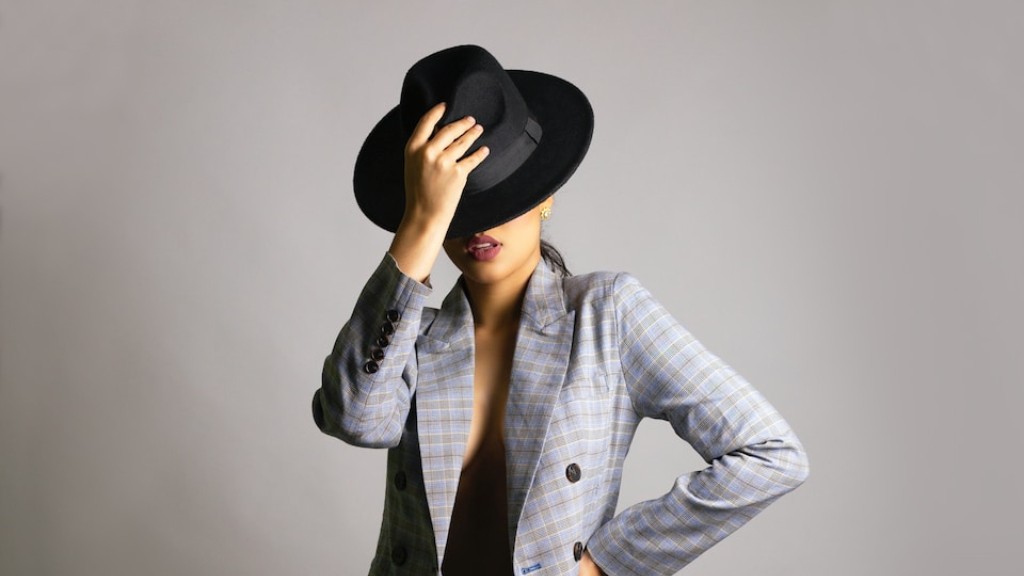Are you thinking of wearing a straw hat this fall? This wearable accessory has been a popular choice for many for the fall season. Straw hats are a timeless fashion piece, and they have been increasing in popularity. They are an effortless way to add a bit of character and style to any look, from bohemian chic to adventure-seeking.
Straw hats have many advantages. Firstly, they are lightweight and breathable, making them the perfect accessory for cooler weather. They are also very affordable and come in a variety of styles and colors, allowing you to get creative with your wardrobe. Straw hats are also incredibly versatile and can be paired with almost any outfit, from jeans and a T-shirt to a dress and heels.
However, straw hats should be avoided in wet and cold climates, as they can be easily damaged by rain or snow. This applies even moreso if your hat is made of seagrass, as these hats are especially sensitive to moisture. In addition, straw hats are not suitable for activities such as skiing, skating, or snowboarding, as the weight of the hat could cause a neck injury.
For those looking for a bolder fashion statement, straw hats can be paired with hats of other materials, such as felt or wool. This creates a unique and exciting look that is sure to turn heads. Additionally, large brimmed straw hats can be worn with a headscarf or other accessories to really make a statement. Many fashionistas are now wearing straw hats with a fun and unique combination of patterned scarves and jewelry.
Straw hats can also be a great way to protect your face from the sun. The material is breathable and lightweight, which makes it perfect for warm climates. Opt for a wide-brimmed hat for extra protection, and choose one with a UV protection label. This way, you can protect your skin from sun damage while having fun in the sun.
Finally, straw hats can be a great way to add a unique touch to any look. Experiment with different textures and patterns, or go for a classic neutral color. There is bound to be a style that will suit your taste and style. So this fall, why not try wearing a straw hat to make a statement and bring a bit of sunshine into your wardrobe?
Are straw hats season appropriate?
Ultimately, it depends on where you live and how inclement the weather is. If you live in a warm, dry climate, then a straw hat could be the perfect accessory for the fall season. The lightweight fabric is breathable and cool, making it an ideal choice for cooler temperatures. However, if you’re in a wetter climate, opt for a different material.
In any case, it’s important to remember that straw hats should never be worn in extreme climates, as the material is too delicate for rough temperatures. Additionally, they should not be worn during activities that require a lot of movement, as they may be heavy and cause harm.
For those who live in moderate climates, it is perfectly acceptable to wear a straw hat in the fall. This stylish accessory is bound to elevate any look and add a bit of fun to any wardrobe. Try pairing it with different colors and textures for a look that is truly one of a kind.
How to style a straw hat
One of the best things about straw hats is that there are countless ways to style them. Whether you’re looking for a chic and sophisticated look or a fun and adventurous vibe, there’s a straw hat that’s perfect for you. Here are a few tips to help you get started:
Different types of straw hats
When it comes to straw hats, there are so many different options to choose from. There are wide-brimmed hats, flat caps, berets, and everything in between. Additionally, you can opt for a pre-made straw hat or have one custom made. This is especially helpful if you’re looking for something unique or if you’re unfamiliar with hat sizing.
When selecting a straw hat, take into consideration the color, texture, and style. For example, a straw cowboy hat tends to be a popular choice for those looking for an outdoorsy look. For something a bit more traditional, opt for a traditional fedora or boater hat. The possibilities are endless!
How to maintain and store a straw hat
Straw hats require a bit more care than other types of hats. They are sensitive to moisture and heat, so it’s important to take a few extra steps when storing them. Here are some tips to help you make your straw hat last:
Final Thoughts
Straw hats can be a great way to add a unique touch to any look. They are lightweight and breathable, making them a great option for cooler climates. They can be easily paired with almost any outfit, from casual to sophisticated. Furthermore, they offer protection from the sun and come in a variety of shapes and sizes.
When picking a straw hat for the fall season, keep in mind the climate you live in and the activities you’ll be engaging in. Never wear a straw hat in wet or cold climates and opt for a different material when engaging in high-intensity activities. With the right care and storage, your straw hat is sure to last.



